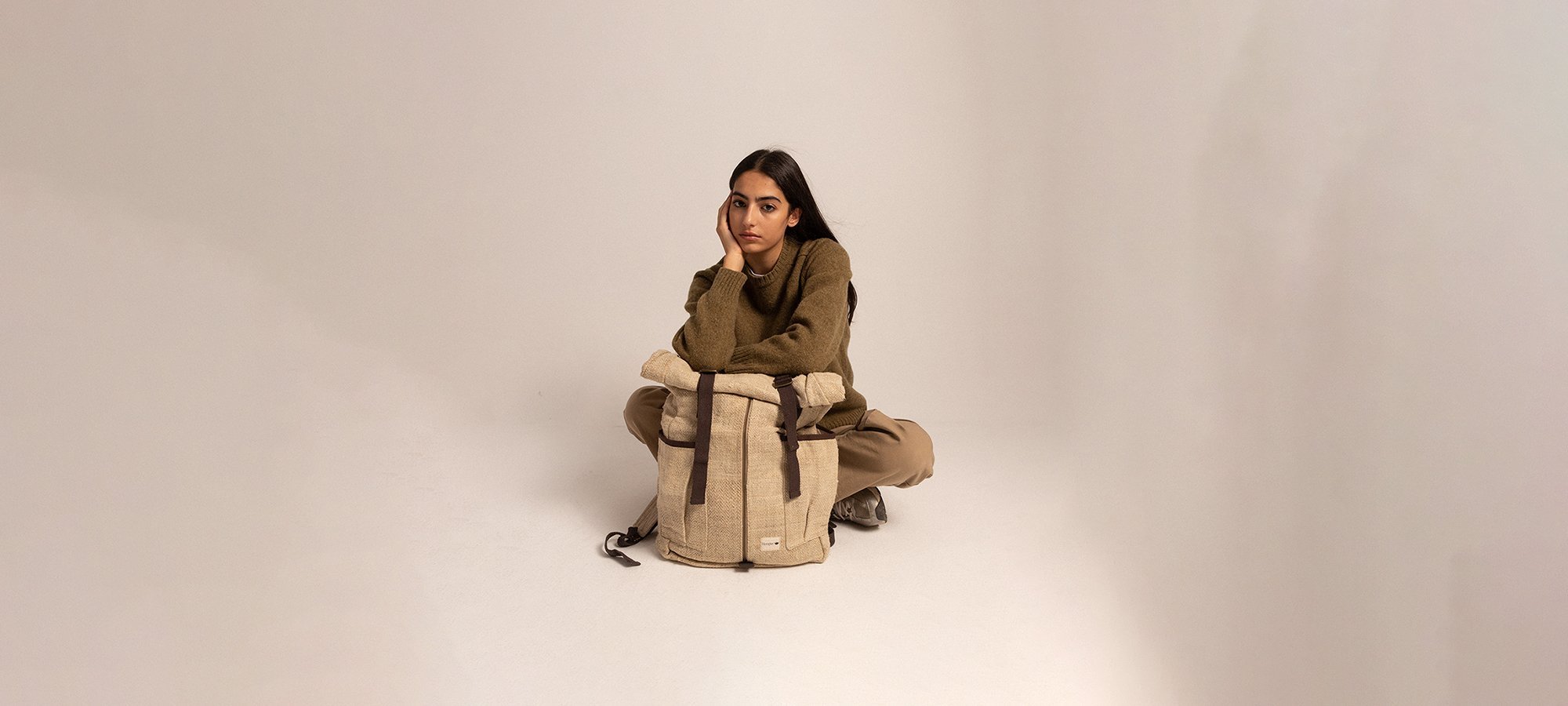Hemper is a Spanish brand that uses hemp as raw material, one of the most sustainable fibers on the planet.
Why? A couple of reasons. Firstly, it doesn’t need either herbicides or pesticides since it doesn’t suffer from pest problems. Secondly, it requires less use of water: only 200-500 litres of water are used to produce 1kg of dried hemp. On the other hand, 10 times more is needed to produce 1kg of cotton. And finally, it’s the plant with the most O2 regeneration power.
In addition to producing sustainable products, this brand employs communities and artisans at risk of social exclusion in Nepal. That’s why the brand has the BCorp seal that certifies their activities with a positive impact: socially, environmentally, and economically.
As stated in their website:
“From the material source (a wild plant original from the Himalaya, where the very thread production takes place) to the processing (The weaved fabrics are naturally dyed by Nepali female experts organized as a certificated Fair Trade production in Kathmandu), the circularity of our production never abandons its origins: Nepal.”
“The development is not an external and aggressive one, but one in which Nepali heritage regenerates into economical, environmental, and social wealth”.
“Through our creativity and our friends’, we want to inspire a whole generation to be more responsible and more sensitive in its way of consumption. Because our future depends on people being fair with one another”.
The production process
So how are the products made? In Bluehouse we detail the manufacturing process of all our products, so that you can see the circularity and sustainability behind the brands we support.
Let’s take this backpack as an example:

The process begins in the mountains of the western villages of Nepal, where hemp has been handled for centuries.
In these villages, rural families grow and harvest it. Then, it is boiled in order to obtain the inner fibers that are later attached to each other forming the yarn.
The yarn is taken to Kathmandu, more in particular to a community of low-income families located in the neighborhood of Budhanilkantha. In these families, women are in charge of washing the yarn and getting it prepared for crafting. When it’s ready, using a traditional loom, the yarn is interlaced forming the fabrics. Later on, tailors craft the final backpack. Recycled rice bags are used for the inner protection, that also shape and contribute to the durability and resistance of the bag.

The packaging
Hemper’s packaging created a solution to two problems they identified separately:
- The amount of waste generated through packaging in any fashion brand never made sense with their model of production.
- The amount of abandoned bags of rice in the streets of Kathmandu, which may end up polluting further ecosystems.
How? They gathered bags of rice that were used to transport grains within Nepal and adapted and stitched them to be used as bags.
For the past three years, all of their orders, small or big, have been wrapped in colorful rice bags.
Every design is unique since the varied and colourful graphics in Nepali rice bags are a fascinating array of important representations of Nepali visual culture. Furthermore, rice is not only the nutritional basis of Nepal but also many cultural manifestations are celebrated around it.
For example, the “Pasni”, the ritual where babies between their sixth and seventh month of life try rice for the first time. Or “Yomari Punhi”, a festival in which the end of rice harvest is celebrated during the full moon between November and December (and where people eat Yomari, a dessert prepared with rice flour and filled with sugar or sesame seeds resembling the form of a fish).

Natural dyes
Fruits, peels, minerals, roots and plants.
Pieces of cloth are submerged in these natural compounds over low heat, and that’s how they begin to absorb their unique colors.
In addition to caring for the environment, this method is a way of expressing creativity and connecting with nature.
With the added magic that the results are never exact and one product is never identical to the other, since depending on the type of water used, or the time of year in which the material chosen for dyeing was picked, this can affect the final result.

Source: Hemper website
View Products

